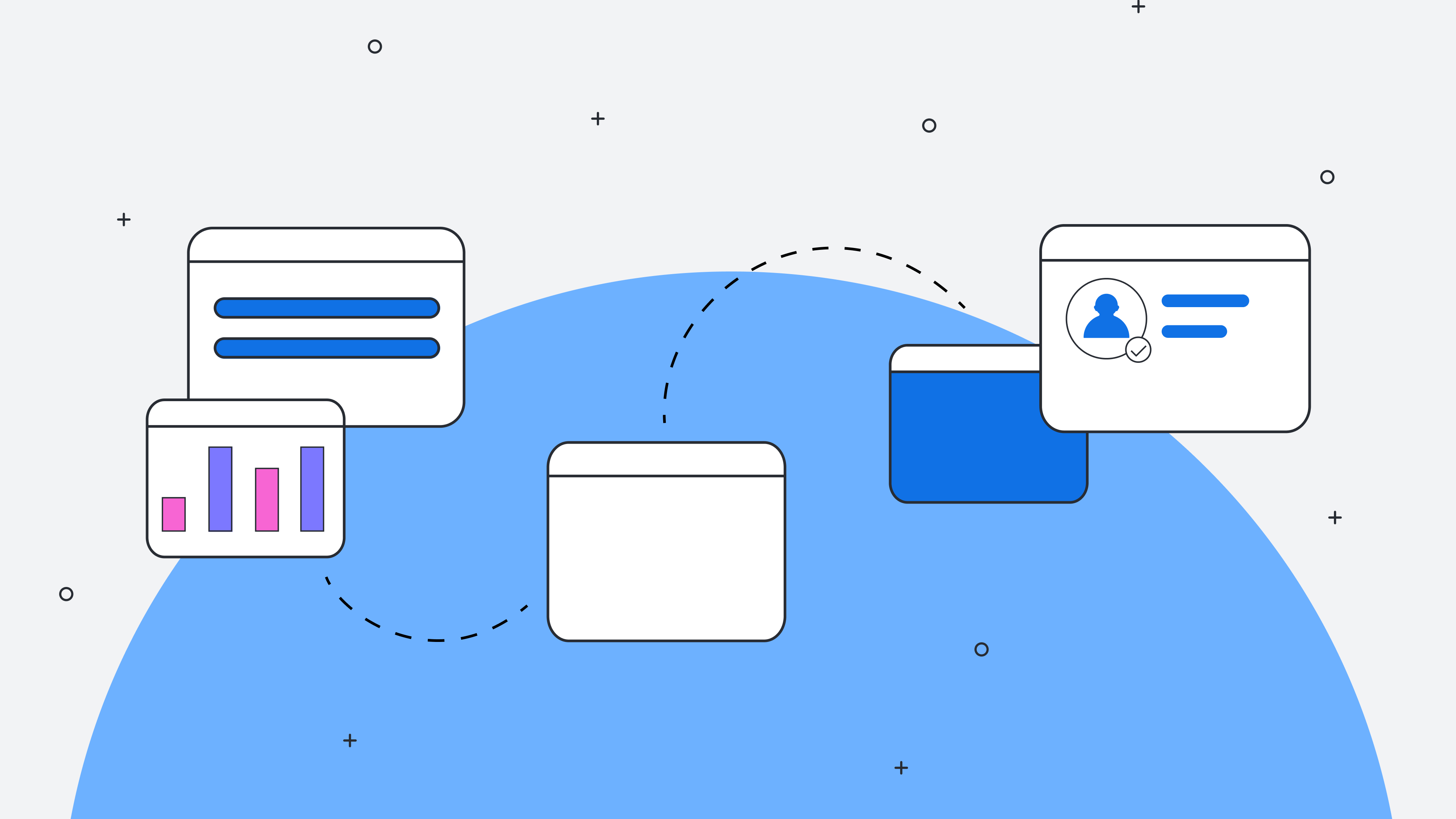
10 templates to help your team create an innovation repository
Reading time: about 8 min
For fast-moving teams, the process of documentation can often feel like a chore.
But when you’re just trying to build something new, good documentation is the key to innovation—and to innovate with regularity and replicability, you may want to try building an innovation repository.
In a recent blog post, we covered how to transform a document repository from static file storage into an innovation repository that boosts alignment and creativity. In short, an innovation repository is a way of thinking about your brainstorming sessions, user journeys maps, process diagrams, UX wireframes, sprint planning boards, retrospectives, and more as a form of highly visual, “always on” documentation that paints a picture of how work gets done at your company.
By bringing all these documents, artifacts, and shared team resources together under the umbrella of an innovation repository, you can reduce learning curves during stages of high growth or turnover in your organization, enact change faster through instant context-sharing, become more efficient in bringing new ideas and products to market, and better democratize decision-making.
Building your innovation repository
Sound overwhelming? The good news is building an innovation repository may not be as difficult or time consuming as you think. In fact, all of the components of a good innovation repository typically already exist within the work your team is doing—especially if you’re using a visual collaboration suite like Lucid with a shared virtual canvas where your team collaborates.
Here are several phases of the innovation process where you can document your work under the umbrella of an innovation repository to help build a living blueprint of your business (including visual, collaborative templates for 10 of the most common activities).
Don’t feel like you need to use all of these templates to create a useful innovation repository, or think that these templates exclusively make up an innovation repository. Use them as inspiration to find the mix that works best for your specific team’s personalities, preferences, and working styles:
Ideation phase
All innovation starts with an idea—and your best ideas should have a clear thread from conception to execution showing how they were brought to life.
Why the ideation phase is important to include in your innovation repository
Consider yourself in the shoes of a new employee joining midstream on a project or campaign. If you’re only ever swapping thoughts on video calls or off-the-cuff desk-side chats, it can be hard for an individual to understand where a team or company’s “head is at” on whatever problem they’re solving. Keeping a record of your ideation activities on shared virtual boards means anyone can hop on a collective train of thought in order to get up to speed quickly.
Templates for the ideation phase
- Brainstorming: This brainstorming template allows you to record a quick asynchronous video on Loom to provide context in advance of a brainstorm, before giving you space to ideate freeform and vote on next steps.
- Storyboarding: When you need to further establish context related to a specific problem you’re trying to solve, this storyboard template can help you highlight realistic events a user might go through to accomplish a goal.
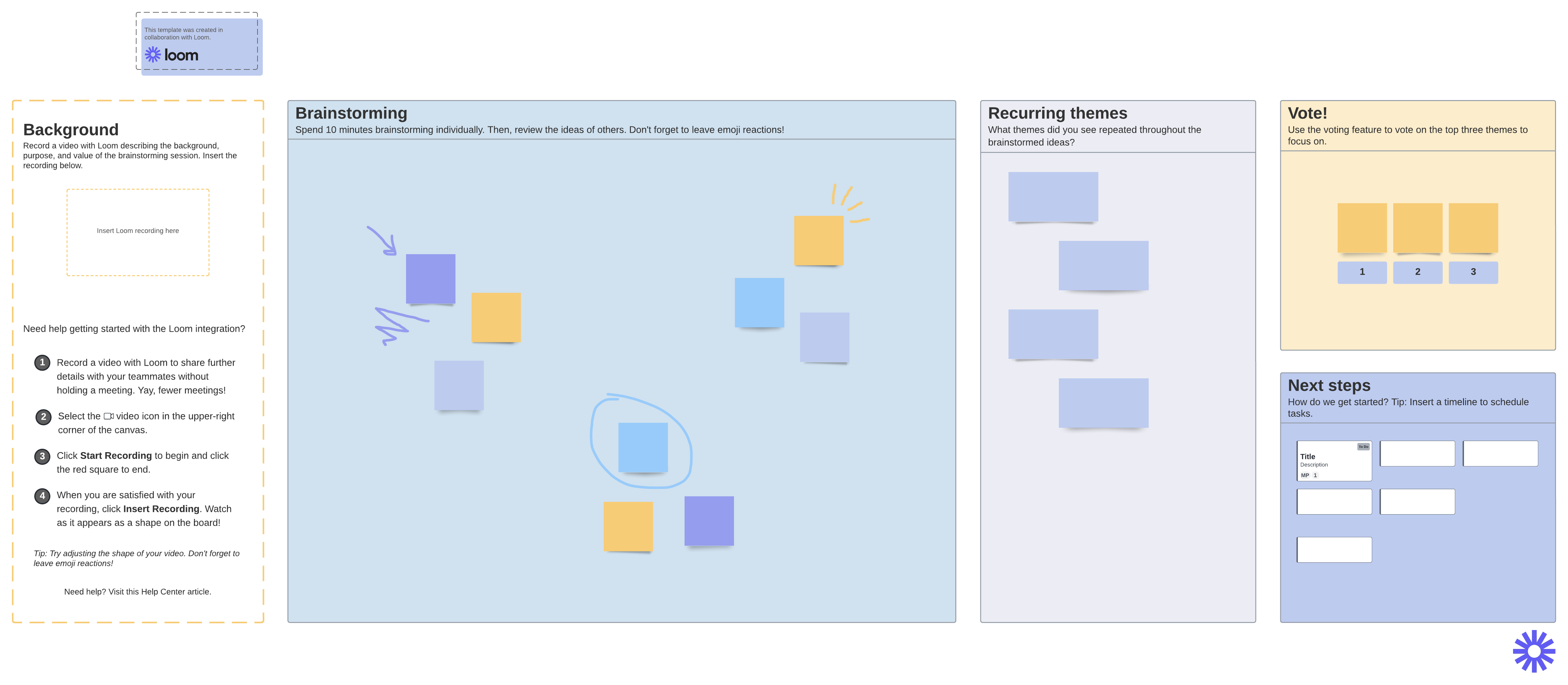
Collaborative AI
Sometimes, the hardest part of ideation is getting past the blank page. This is a major barrier to innovation for lots of teams—even when everyone gets together, it’s challenging to get ideas flowing.
Lucid’s Collaborative AI feature is the ideal solution. Instead of spending precious time feeling daunted by a blank Lucid document, all you have to do is fire up Collaborative AI and have it do the heavy-lifting for you. Collaborative AI is capable of generating ideas, coming up with more ideas based on the first round of generated ideas, synthesizing information, and summarizing ideas.
Planning phase
A plan without documentation is just a wish (and a recipe for miscommunication and missed deadlines). With your best ideas documented in writing and visuals in your innovation, the planning phase starts to bring structure, cohesion and clarity.
Why the planning phase is important to include in your innovation repository
As your innovative ideas expand beyond brainstorming to actually becoming a formal plan and more teams become involved, it’s important that stakeholders have visibility into how a plan will be executed so they can sign off with all the appropriate context. And if any issues come up during the later phases of building (or a shipped product wasn’t as innovative as originally intended), you can revisit your plan to analyze whether it was a fixable process breakdown, an individual execution issue, or something else.
Templates for the planning phase
- Product roadmap: Use this product roadmap template to align various team members the product vision and to make sure all the necessary work for a successful feature release is accounted for. Your product roadmap should be consistently evolving over time to meet your business’ unique innovation needs.
- Sprint planning: Replicate the experience of collaborating and innovating in real time with your team. This sprint planning team room template recreates the feel of working together around a whiteboard in the same room, and helps set your sprint up for success.

Design phase
With a plan in place, it’s time to figure out how to bring new innovations to market for your customer. The design phase is often the richest source of insight and transparency into how your customer interacts with your products
Why the design phase is important to include in your innovation repository
As you now focus on how to release useful increments into the wild, the design phase documents (with structure and rigor) how customer insights will be turned into real product innovation. It’s also important to document the infrastructure and architecture behind your product to make sure each new launch has the support it needs to scale.
Templates for the design phase
- UX research: Outline key components and problems to solve, ask questions, receive feedback, and set goals for your user research with this UX research planning template.
- Intelligent diagramming: Map out complex processes with visual clarity while pulling in relevant data point and work tickets—these entity relationship, application architecture and network diagram templates can help you create a blueprint for the key infrastructures of your business.
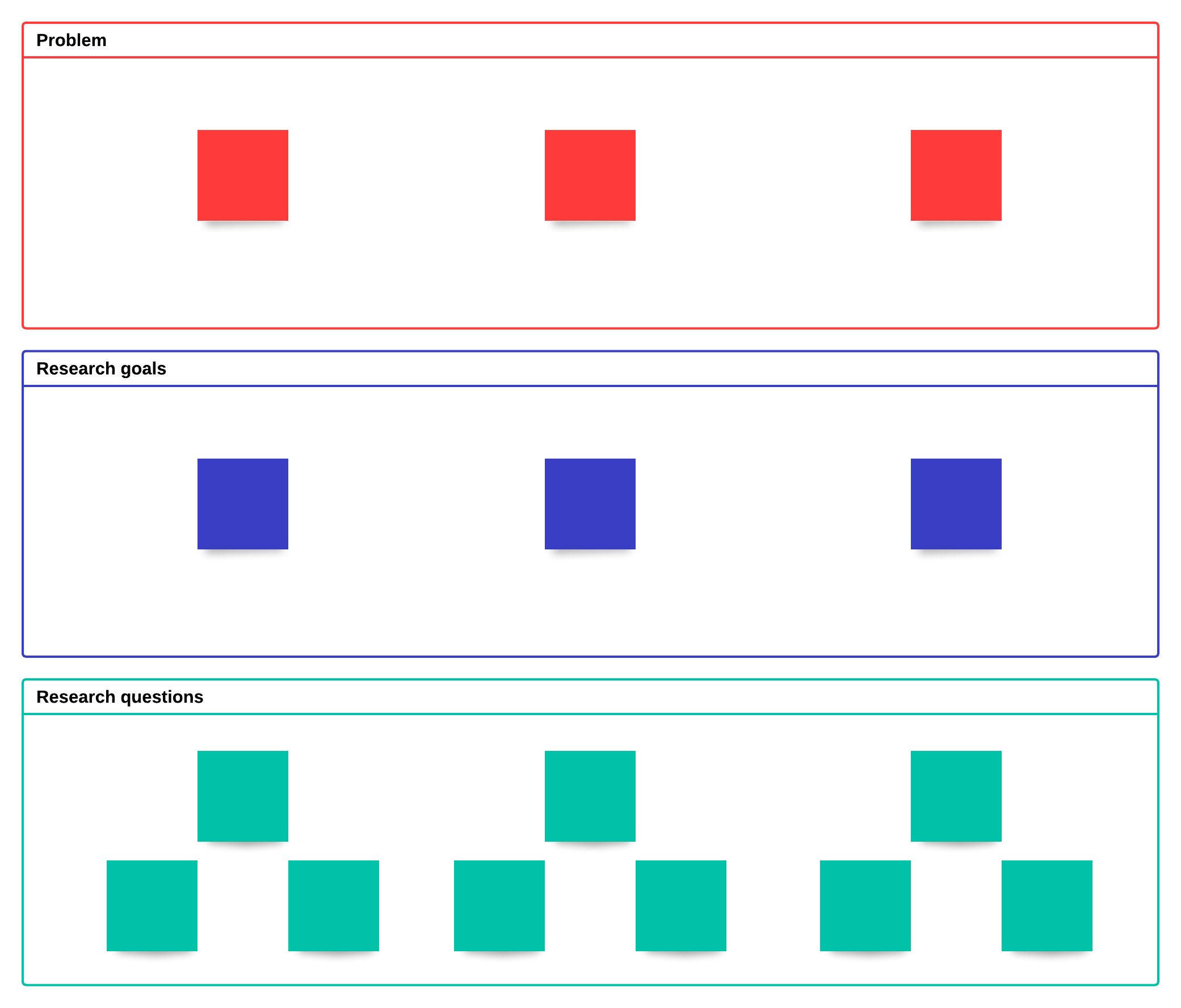
Build phase
The build phase is where the rubber meets the road and your plan starts to come to life. As you get into the nitty gritty of executing the work, it can be difficult to keep track of all the minor breakthroughs you make every day that contribute to major innovations.
Why the design phase is important to include in your innovation repository
Incorporating documents from the build phase into your innovation repository make it easy to innovate with the customer in mind and track how you’re executing against your original plans. “Showing your work” along the way can also provide easy context for a new team member joining a longer project in the middle of the build phase.
Templates for the design phase
- User journey flow: Attack inefficiencies and pain points in your customer’s journey through your website, product, or app with this customizable user journey flow template.
- Scrum task board: Manage your entire team's workflow for individual sprints and create detailed tasks connected to specific user stories with this daily Scrum task board.
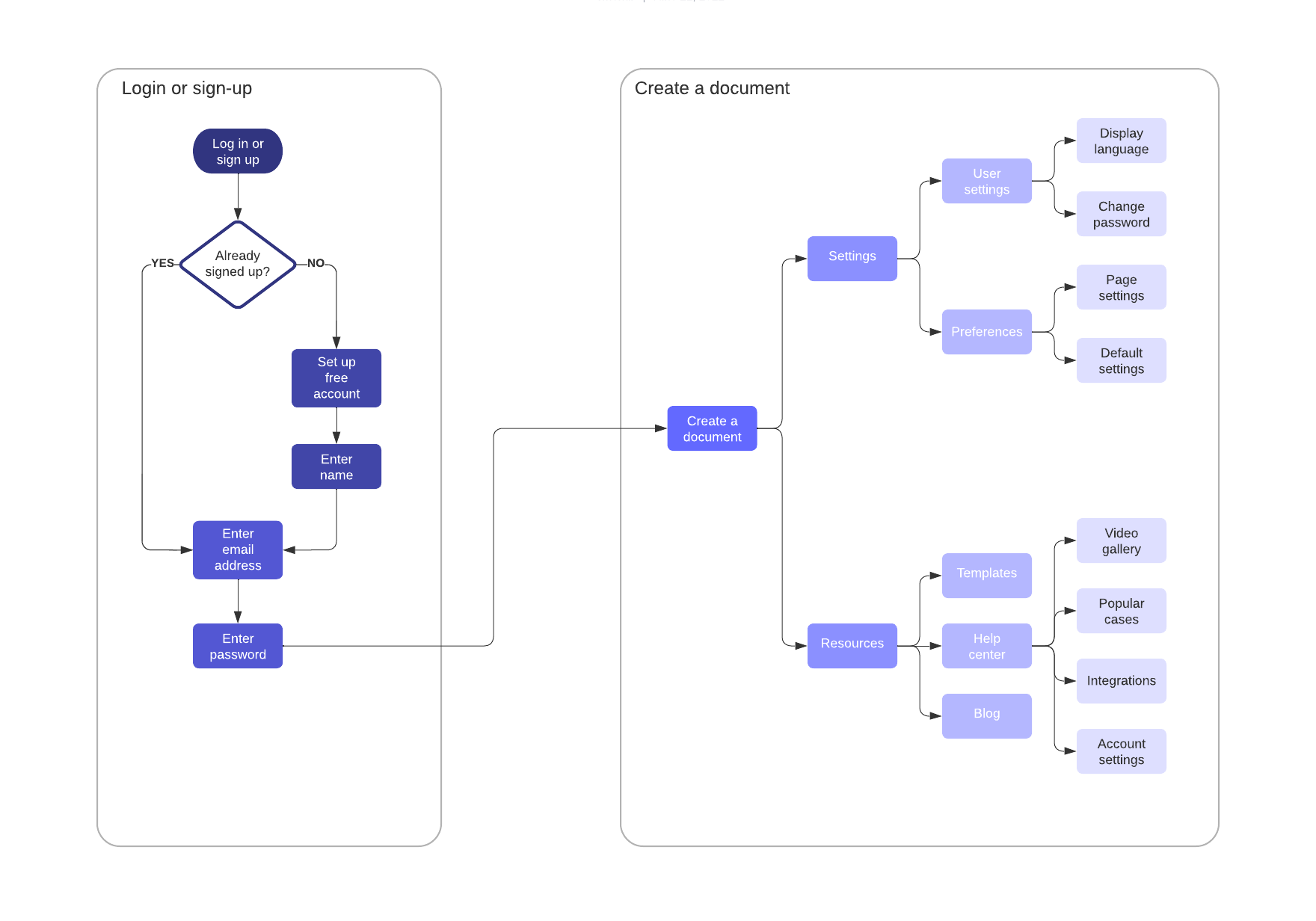
Launch and evaluation phase
The launch and evaluation phase is your time to evaluate how your launch went, track progress against your goals, and turn successful releases into easily repeatable events. But it’s not just about the deliverables—it’s also about how your team came together to collaborate.
Why the launch and evaluation phase is important to include in your innovation repository
If your team struck gold on a customer insight, made a breakthrough in how they work together most effectively, or you just want to replicate how a project unfolded, you can’t skip this step in your innovation repository. Leaving time to end the project right keeps morale high, cements learnings while they’re still fresh, and sets the next project up for success.
Templates for the launch and evaluation stage
- Multi-team retrospective: Facilitating successful multi-team retrospectives can feel like a full-time job—this template makes it easier, with spaces to celebrate success and document learnings for the future.
- Current state mapping: Use this current/future state activity to close the loop on your innovation process and bring your team together to talk about pain points, inefficiencies, and future goals before diving headfirst into the next project.
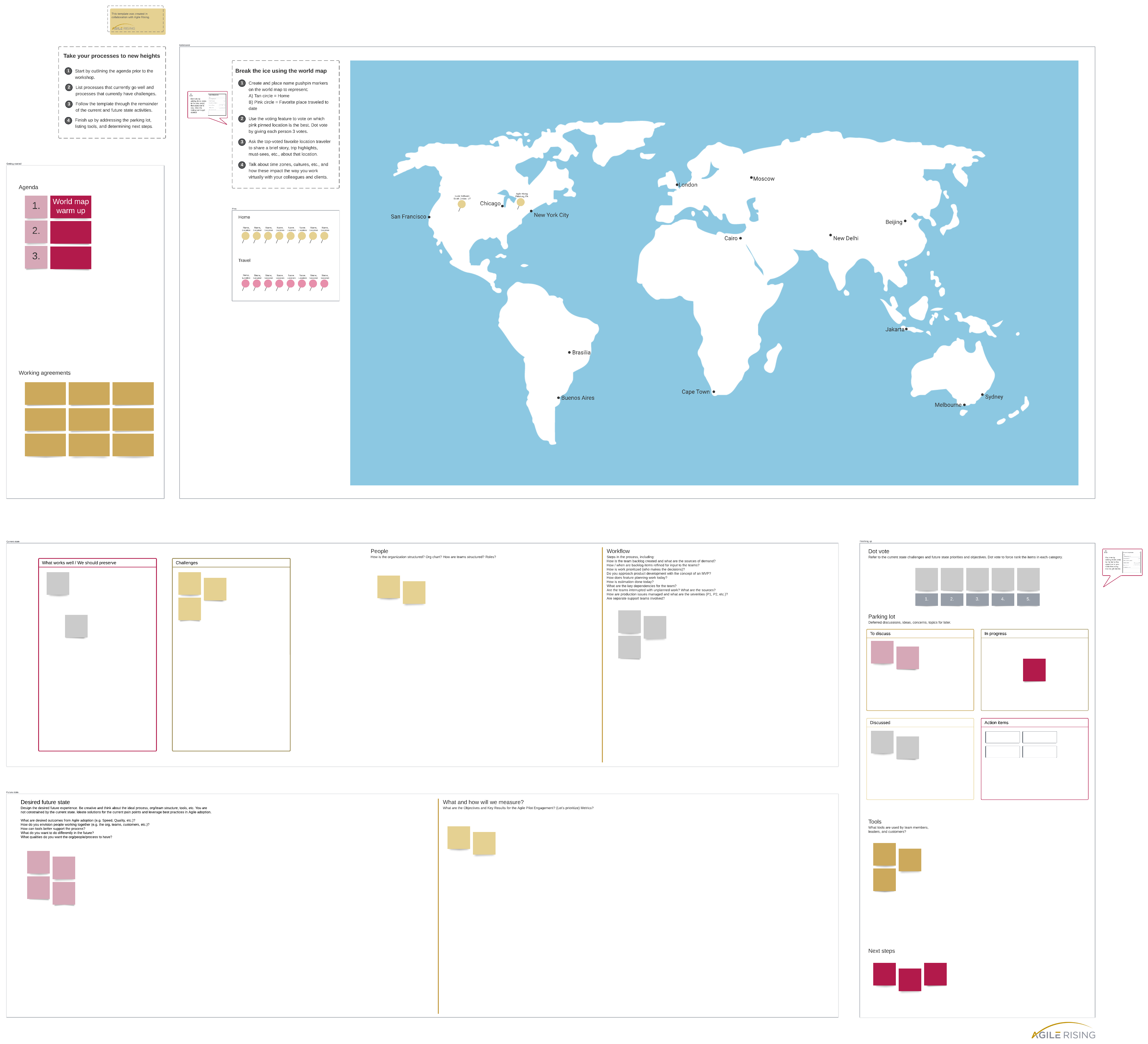
Centralize your innovation repository with team hubs
Once you’ve created an innovation repository, you need a centralized location to help your team navigate it. Team hubs in Lucid allow you to create a one-stop shop, so to speak, for your team members. You can include your innovation repository, essential documents, communication, messaging, and more in one persistent and visual space. You can also pin team spaces within team hubs to serve as a home base for coordination.
Creating this single source of truth to house your innovation repository makes aligning your team much easier. Rather than think of documentation as an obstacle to overcome, you can think of it as building a priceless library of resources and living documents within a central single source of truth.

Learn why your business needs to build an innovation repository.
Read moreAbout Lucid
Lucid Software is the leader in visual collaboration and work acceleration, helping teams see and build the future by turning ideas into reality. Its products include the Lucid Visual Collaboration Suite (Lucidchart and Lucidspark) and airfocus. The Lucid Visual Collaboration Suite, combined with powerful accelerators for business agility, cloud, and process transformation, empowers organizations to streamline work, foster alignment, and drive business transformation at scale. airfocus, an AI-powered product management and roadmapping platform, extends these capabilities by helping teams prioritize work, define product strategy, and align execution with business goals. The most used work acceleration platform by the Fortune 500, Lucid's solutions are trusted by more than 100 million users across enterprises worldwide, including Google, GE, and NBC Universal. Lucid partners with leaders such as Google, Atlassian, and Microsoft, and has received numerous awards for its products, growth, and workplace culture.
Related articles
How to turn your document repository into an innovation repository
Not all document repositories will help you innovate. Find out how to create one that boosts alignment and creativity here.
Guide: How to use an innovation framework to turn ideas into action
Don't leave innovation up to chance. Learn how to use Lucid’s innovation framework to make innovation a repeatable, scalable occurrence.
Busting 5 common innovation myths with GIANT Innovation’s David Dabscheck
Innovation is on everyone’s minds—but what does it really mean to be innovative? Find out in this myth-busting article with GIANT Innovation’s David Dabscheck.
How Lucid boosts innovation—from ideation and beyond
Discover how Lucid enhances your innovation process from ideation to reality.